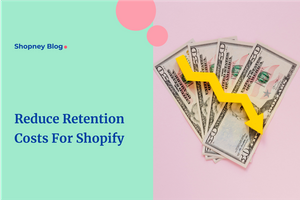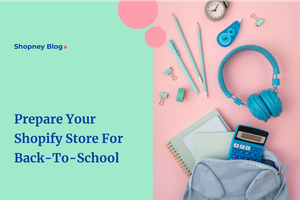
In a world full of notifications and distractions, keeping a shopper engaged on your eCommerce app can be tough.
If they don’t spend enough time on the app, then the chances of conversion are even more poor. As a marketer/founder, that should scare you.
But the crux is that you need to increase your mobile session time on the app. Let’s get right to it.
What do you mean by mobile session time?
Mobile session time refers to the amount of time spent by the user from the launch of the app until they terminate their usage. This only includes the uninterrupted interaction with the application.
Here two types of information are captured:
- Session metadata or session length time
- Usage data or in-app events.
Knowing what users do (or don’t) lets the founders, marketers and app developers understand engagement. This can help developers identify where improvements need to be made and which features are most successful. This typically translates into product, design and development decisions which can help improve the user experience.
Session length can also be an indicator of retention.
Longer sessions = More engagement = Higher retention.
Thanks to this metric, you can identify app usage trends and make sure that your app is a success.
Mobile web vs mobile app session time

90% of a customer’s time spent on the mobile is on apps, and only 10% browsing the rest of the internet.
In the ecommerce space, the numbers give an even better perspective. Mobile app users spend an average 201.8 minutes per month shopping, compared to 10.9 minutes per month for website users.
The numbers clearly indicate that the future lies in investing in apps; and making sure that your customer is engaged on the platform.
Why are mobile session times important?
Session time helps us create average benchmarks in the industry.
You can categorize and form ideal customer personas based on gender, age, location, kind of products they are interested in, offers that drive purchase and more.
If you know how, when, and for how long & which kind of users use an app, you can understand if the app’s objectives are fulfilled and improve user engagement if necessary.
The rule is simple - the more you understand your customers, the better is your acquisition, engagement and retention

How can you improve mobile session time in your Shopify store app?
Here are a few ways we recommend:
1. Simplify onboarding but ask for the important data
Let’s be honest, first impressions are critical. In an app, that would be known as onboarding. Here’s how you could do it well:
- Make sure that your app interface is simple, so that it’s easy for users to navigate.
- Keep in mind that people are lazy. Provide multiple showcase options for users to find their specific interests surrounding your business.
- Ask only things that are relevant to help you improve their experience. Don’t overload users with too many questions at the start.
- In eCommerce, data can be especially sensitive like payment methods, home addresses and more. Make sure that you present how you’ll process users’ data in an easy to understand manner to build trust.
Seamless and easy app onboarding will help increase the amount of time spent on your app.
2. Have In-app chat services
Imagine that you are shopping for a pair of jeans on a new app. You are confused about sizes but you have no one to speak to. You open the support tab and the option is between a phone number or an email to reach a support executive.
Now that suddenly seems like a lot of effort for a pair of jeans. You’d rather go back to an app that you’re familiar with. And you drop off.
This is exactly the risk of not having a live chat on an ecommerce website.
In- app chat is a pop-up button that, once clicked, allows your potential customers to message you. It can provide answers and/or direct people to your FAQs for more detailed guides.

It helps to improve the experience and they feel more secure purchasing from you, increasing both your mobile session length & conversion rate.
With ecommerce live chat, your business development and customer support team members can monitor inquiries, which can further help in product improvement and store navigation.
3. Enable push notifications
Push notifications are messages that pop up on a customer’s device. The trouble with most app developers is that users tend to block all notifications, hence getting them to enable them is top priority.
Why is it important?
- It helps deliver timely & relevant information to users even if they are not active on the app.
- It leads to more time spent on the app, if a particular piece of information or offer caught their eye.
Here are the types of notifications you should be sending, if you are running an eCommerce store:
- Welcome notifications: This is the first interaction with a user. It could be personalized, fun and engaging, while providing a little information about the next steps.
- Informative notifications: These notifications could cover new app features, new drops, upcoming sales, updated FAQs or more. Abandoned carts or payment completion reminders can be crucial to increase conversion.
- Entertaining notifications: Audiences no longer want plain and boring messages that will get lost in the 100s of notifications they receive on their phones. Instead, humor can help increase engagement and keep the brand at the forefront of their minds.
- Promotional notifications: New offers, sales & discounts should be publicized through notifications since they immediately capture attention.

Things to remember when sending these notifications:
- Choose the right time depending upon scenario and geographical areas.
- Personalize your push notifications based on in-app behavior.
- Don’t bombard your users with too many notifications or use it too infrequently.
Remember to test different types of notifications and analyze user behavior to refine your notification strategy. The aim is for users to click on the notifications so that they end up spending more time on the app.
4. Personalize the in-app experience
Personalization is not only a crucial capability, it’s one that punches above its weight. 71 percent of consumers expect personalized interactions and 76 percent get frustrated if there is a lack of it.
Hence, there is a big need to track data with tools Like MixPanel which can help understand customer preferences and create customer segmentation.
Tailor the app experience for these segments for more effective personalization via statics and dynamic factors. Here’s how:
- Static personalization includes changes on the app that don’t change. Eg - Placing your user’s name in a notification.
- Dynamic personalization includes changes on the app based on customer behavior patterns. Eg - Keeping preferred categories, products on the homepage, sending cart abandonment email/whatsapp etc.
By personalizing the user experience, there will be an increase in engagement and session length. This results in more satisfied and loyal users.
Bonus: Be cautious of the data that you use and that you have all the permissions in place from the customer. The customer should feel safe rather than assume an invasion of privacy.
5. Run app-exclusive deals and discounts

Reward for your users is the best way to increase mobile session length, loyalty and engagement. Here’s how you could reward them:
- Create a referral bonus for your customers. Your loyal customers feel rewarded, and you get new users onboard.
- Add social media contests and offer lucky draws. Apart from increased engagement, it leads to more organic buzz and excitement.
- Build a loyalty program. Users can get cashbacks, in-app currency or even discounts. This can help increase the time spent on the app & purchases.
6. Use Augmented Reality
Augmented reality can literally help bring things to life through 3D models. With the help of this latest technology, customers are able to look at products, study it from all angles, and understand how something truly looks even in a particular setting.
This can help in:
- Increased confidence in the shopper before buying a product. This can lead to lesser exchange and returns.
- It allows the shoppers to spend more time on the app, and truly engage with the products. From the comfort of their home, they can convert any environment into their own showroom.

Conclusion
To keep up with the modern customer, your app needs to be able to keep up with the latest trends — and that could be difficult when you are too close to the business.
But you’re in luck because Shopney has built all the features that you need to create an app that keeps your customer.
Want to know more? Feel free to request a demo so that we can help you skyrocket your mobile session time.



